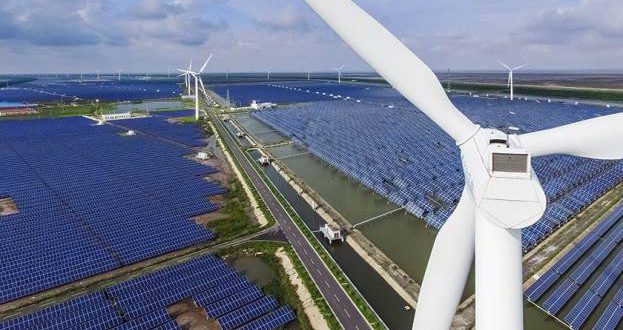South Korea aims to expand the share of renewables and also natural gas in its fuel mix to gradually cut back its high dependence on coal and nuclear power over the 15 years to 2031. the energy ministry said on Thursday.
The ministry’s new draft proposal – an adjustment to its power supply plan for 2017-2031 – reflects growing domestic calls for better air quality and more stringent nuclear safety.
Despite efforts to boost renewables and natural gas. however. South Korea’s power generation mix will remain dominated by nuclear and thermal coal. which will still account for 60 percent of electricity in 2030. the plan showed.
“While the existing plan is focused on stable power supply and economics. we have laid out a new plan to improve safety and environmental aspects of the plan.“ the energy ministry said.
Asia’s fourth-largest economy currently generates 45 percent of its electricity from coal. and around 30 percent from nuclear reactors. Liquefied natural gas (LNG) meets 17 percent of power demand and renewables only 6 percent.
The biggest jump will come for renewables. which are to make up 20 percent of South Korea’s power generation by 2030. while the gas share will rise only slightly to 18.8 percent. from 16.9 percent now.
South Korea expects its electricity demand to grow 1.3 percent annually to 100.5 gigawatts (GW) in 2030. the plan showed. about 11 percent below its previous forecast in 2015.
The ministry said it planned to raise consumption taxes on thermal coal by 6 Korean won ($0.0055) per kilogram from April in 2018 and work on other ways to cap coal power generation. although it gave no details on what those might be.
The government said it would work gradually. introducing the biggest changes after 2022. The plans are not as ambitious as those pledged by newly-elected President Moon Jae-in. who had proposed reviews of existing plans to build nine coal power plants and eight nuclear reactors.
South Korea will now convert two planned coal plants to gas. down from an initial plan to switch over four out of nine new coal-fired stations.
With that reduction. though. the two planned plants that will be converted will be increased in capacity to 1.9 GW from 1.2 GW. and four existing coal-fired plants will also change to using natural gas as a fuel.
Despite the eventual plans to reduce nuclear output. South Korea will add two reactors by 2022 after a public poll in October supported their construction.
Only from the mid-2020s will the country’s nuclear power share gradually decline. South Korea is second only to France in terms of reactor capacity per million people.
To push ahead with its nuclear phase-out. the ministry plans to shut South Korea’s second-oldest nuclear plant earlier than scheduled and will decide when in the first half of next year.
The country’s power plan is subject to a public hearing. to be held on Dec. 26. before it finalizes the draft.

 Iran Energy News Oil, Gas, Petrochemical and Energy Field Specialized Channel
Iran Energy News Oil, Gas, Petrochemical and Energy Field Specialized Channel



